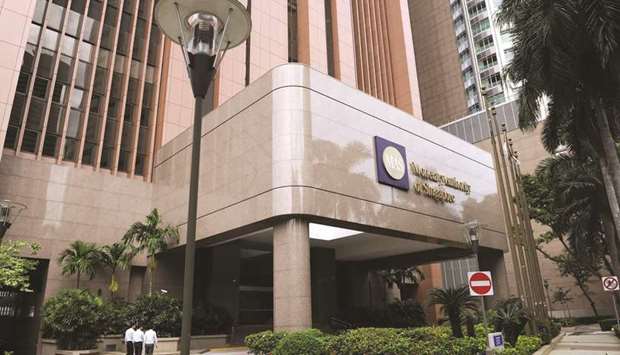Fresh off a third quarter that saw it outperform all major Southeast Asian peers save for the Thai baht, the Singapore dollar is at an inflection point with Monetary Authority officials set to gather for their bi-annual review. Tighter policy would keep the currency well supported into year-end, according to Divya Devesh, head of Asean and South Asia FX research at Standard Chartered Bank.
But more likely the central bank will decide to stand pat, he said.
That puts the Singapore dollar’s nominal effective exchange rate, the country’s main policy tool, at risk of reversion after climbing as much as 1.6% above the midpoint of the MAS’s target band, according to Standard Chartered estimates, a gap not seen since mid-2016.
Add to that the prospect of a further escalation in the trade war between the US and China, and you have a recipe for foreign-exchange weakness in the fourth quarter.
Given the risk-reward profile, “we remain biased towards a weaker Singapore dollar in the coming months and expect the currency to underperform its peers in Asia,” Devesh said. The Singapore dollar fell to 1.3825 against the greenback on Friday.
Unlike most central banks that use interest rates to tackle inflation and growth, the MAS instead guides the local dollar against a basket of its counterparts, adjusting the pace of appreciation, known as the slope, the width of the target band and the level at which that band is centred.
At its last meeting in April, officials made a measured change to policy, allowing the currency to appreciate faster by increasing the slope. The first adjustment in two years was driven by upward pressures on core inflation underpinned by an improving labour market.
But recent lower-than-expected manufacturing figures, as well as whole-economy PMI data below the key 50 level separating expansion from contraction, suggest the nation’s economy is running into headwinds.
Still, climbing consumer prices and crude near a four-year high will pressure officials to stay on their policy tightening path. So should expectations for more hawkish central banks abroad, underscored by Wednesday’s surge in 10-year US Treasury yields to the highest since 2011.
The question now becomes if recent dovish data is enough to prompt the central bank to hold fire once again. If so, then the currency’s upside looks limited.
Below are key Asian economic data and events due up:
Today: Australia ANZ job advertisements, Caixin China PMIs, Taiwan trade figures.
Tomorrow: Australia NAB business confidence and Japan BoP current account balance.
Wednesday, October 10: Australia Westpac consumer confidence, Japan core machine orders, and Philippine trade figures.
Thursday, October 11: RBA’s Ellis speaks, Japan PPI, Malaysia industrial production, and South Korea Balance of Payments current account balance.
Friday, October 12: Singapore GDP and retail sales, MAS decision, Australia home loans, RBA Financial Stability review, New Zealand BusinessNZ manufacturing PMI, China trade balance, India CPI and industrial production, and South Korea unemployment rate.

